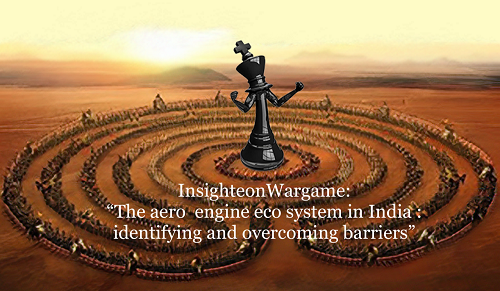
Several papers have been submitted to address the issue of indigenisation of aero gas turbine but few necessary steps have been taken in this regard. And it appears that this technological gap is not going to be bridged too soon. A three-day war-game conducted by Delhi based Insighteon Consulting highlighted the inadequacies and challenges in developing gas turbine engines and attempted to ferret out the steps required to bridge the technological gap. If successful, it will be the biggest push to the Atmanirbharta campaign, saving the Ministry of Defence foreign exchange outflow of INR 3 lakh Crores in any block of 20 years. Participating in the war-game were retired DRDO senior scientists, leaders from the public sector like ISRO, HAL, NAL, GTRE, private industry representatives from Godrej Aerospace, Paninian India and Bharat Forge, academia from IISC and IITs, retired defence officers, bureaucrats, diplomats and members of think tanks. The conduct of the war-game followed a “Horizon Scanning” model, forcing the participants to recognise inherent uncertainties and anticipate future opportunities or threats, thereby offer creative solutions to this challenging task at hand.
 |
Insighteon Wargame – “The aero engine eco system in India: Identifying and overcoming barriers”
The small gas turbine engine market in India for next 20 years was estimated to be more than INR 60,000 Crores. There was a unanimous consensus to the fact that by not indigenising aero gas turbine engines, the nation runs a risk of compromising national security. The rising demand and diversity of applications for gas turbine engines due to increasing usage of unmanned aircraft, drones, UCAVs and low-cost cruise missiles, combined with export restrictions placed by foreign governments on engines of UAVs/missiles and components thereof, make future strategic concerns even more dire.
Consolidation of ongoing engine development programs and instituting a National Commission for Aero Engine Development to bring in unification of vision as well as unification of national assets available in the engine development eco system, was the base theme which ran through the conduct of the war-game. It was predicted that co-development models will only end up as licensed production, as they have done in the past, with major work share arriving from overseas. Therefore, it was felt necessary to nurture design talent and go through the learning curves of experience and productivity without shortcuts.
The war-game eroded a common belief that the private sector is capable of providing only engine components to government institutions and foreign OEMs. The confidence exuded by the private sector to take on complete development of smaller gas turbine engines, if given a chance, was encouraging. The analysts recommended that efforts should be made to involve private industries with identified academic institutions, to take up the challenge of developing three to four small engines for identified aerial platforms in a mission mode, through funded programs, which if required could be mentored and managed by technology labs or the user. However, there has to be an institutional mechanism to support this.
The analysts were of the opinion that, keeping the strategic necessity and the lost time in mind, it would be preferable to follow a 2 plus 1 model, where there is concurrent development of smaller engines by one DRDO lab/DPSU and two private sector entities, in order to build in competition and redundancy. It was felt that the government’s aim of increasing private sector participation in the defence sector is not presently backed with developmental orders at ground level, as far as gas turbine engines were concerned.
Another recommendation of the analysts was that engine development institutions should increase their interaction with the academia and integrate them as a R&D partner. The SPV model was recommended for development of the 110 kN engine whereas the Kaveri was considered suitable for all platforms from 3 tons to 8 tons like the unmanned fighter aircrafts, the Remotely Piloted Strike Aircraft (RPSA) or the Ghatak UCAV.
It was estimated that a delay of approximately six years could be attributed to the absence of HAETF/FTB and other component levels in country test facilities, during the development of the Kaveri engine. Testing overseas is impractical and exposes critical technology to other nations. The analysts were hopeful that in future establishment of in-country engine test facilities will be given the highest priority if aero engines are to be developed in India.
